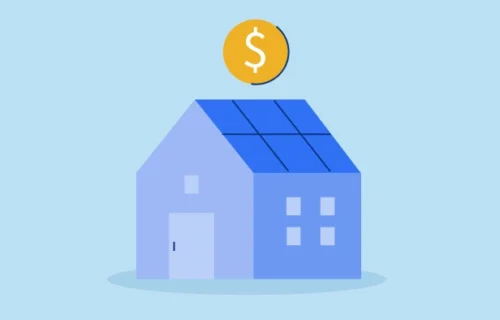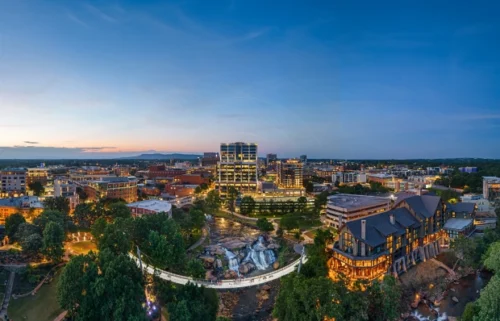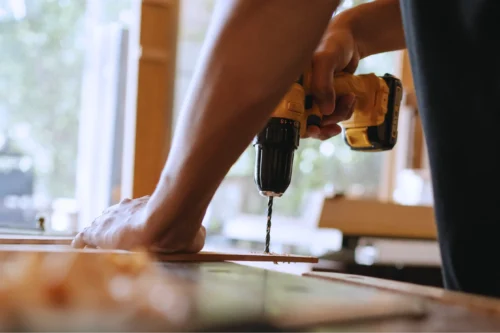
Connect with a Lima One expert today!
If you’d like to know more about this topic or see how it applies to your project, let’s talk.
Why We Shouldn’t Expect a Real Estate Market Crash This Year
No Housing Market Bubbles to be Busted in 2022
Last year was a great year to be a seller or a real estate investor, but it wasn’t such a great year to be a homebuyer. 2021’s real estate housing market was defined by skyrocketing home prices and declining inventory.
The volatile housing market was driven by historically low mortgage rates and droves of people deciding to buy or rent single-family homes after working from home due to the pandemic. Demand was high and supply was low, leading to a hyper-competitive market where 54% of homes sold above list price, according to a report by RedFin.
As we settle into 2022, market experts have analyzed 2021’s data, studied projections for 2022, and have asked a question that has everyone’s attention: will the real estate market crash this year?
No one knows exactly how the market will respond, but experts believe a crash is highly unlikely. Although prices won’t fall in most markets, they will almost certainly increase by less — much less — than they did during the market’s historic 2021 run.
To really understand what could lie ahead in 2022, investors and potential investors should keep three things in mind:
1. Demand for Housing is Incredibly High
By the end of the first quarter of 2022, one thing remained the same: housing demand was still incredibly high, the inventory was still incredibly low, and home prices were still climbing.
According to Realtor.com’s January Housing Trends Report. The U.S. median home listing price reached $375,000 at the end of 2021, with an annual growth rate of nearly 9%.
It’s important to note, though, that increases in homebuying prices didn’t drain rents for single-family home or multifamily units. In fact, those rental rates reached record highs as well.
For example, single-family rents were up 10% YOY in 2021, marking the largest rental gain in more than 16 years. 2021 was also record-setting year for the U.S. multifamily market. The annual rent growth reached 14% -- more than double the rate from 2020. Despite these increases, occupancy rates remained at all-time highs around 97%.
It’s easy to look at those statistics and feel optimistic about real estate investing, but it’s important to note that growth and demand will vary market by market. To ensure maximum growth, returns, and appreciation, real estate investors need to understand the local market where they’re looking to purchase.
2. Construction is Booming Yet Artificially Slow
Single-family rental home construction hit all-time highs in 2021 due in large part to rental property investors. In a tight housing inventory market, investors large and small looked toward new builds and build-to-rent projects as ways to grow their portfolio.
In 2021, 6,740 new build to rent communities in the U.S. were completed – the highest yearly total to date. Currently, an estimated 14,000 build to rent homes are under construction in the U.S.
Construction is booming, but global supply chain issues are keeping that growth at a minimum. Builders are unable to complete homes at a rate fast enough to keep up with the nation’s population growth. Currently, the U.S. is under-built by 3.8 million single-family homes, according to Freddie Mac.
These delays will artificially slow the entry of new homes to the market, which will make the homes that are completed more desired. That means that builders and investors can be confident that they can sell or rent new homes quickly, depending on their real estate investment strategy.
3. A Bubble is Very Unlikely
Many people in financial circles have asked the same question with bated breath: are we going to repeat the 2008 housing bubble?
The best way to figure out where the rental housing market is going is to look back at how it got here. The run-up to the 2008 housing bubble and the 2021 housing market show very different markets. The housing market crash of 2008 had its origins in the unprecedented growth of the subprime mortgages – loans given to borrowers with low credit scores and a high risk of defaulting on loans.
When the Federal Reserve raised the federal funds rate, it sent adjustable mortgage interest rates skyrocketing. As a result, home prices plummeted, homeowners were upside down on their homes, borrowers defaulted. Selling the home wasn’t an option because homeowners didn’t have enough equity in the home.
In the eight years leading up to the Great Recession, homebuilders averaged 1.7 million monthly housing starts. How does that compare with 2021? Since the Great Recession, homebuilders have been more conservative. From 2013 to 2021, homebuilders have averaged 1.2 million builds per month.
Homeowners and real estate investors are in a much better position now than in 2008. Homes are appreciating in most major metros, home-payment-to-income ratios show the power of cheap financing, and homeowners have more equity built up, so they have options like refinancing to make their payments lower. There is very little risk of a mass of homeowners ending up upside down in their homes—which means a rash of foreclosures simply shouldn’t happen. As a result of all of these trends, a supply glut is unlikely to return any time soon. This makes a nationwide housing market crash quite unlikely.
What The 2022 Housing Market Means for Investors
Real estate market crashes aren’t nearly as common as people think. Aside from the Great Recession, real estate prices rose during the dot.com bubble and the early-1990s recession. While no one can say with absolute certainty, signs don't point to a big housing crash in 2022.
Real estate experts expect inventory to remain low, more millennials to buy into the market, and increased interest rates to slow down the meteoric price appreciation we saw in 2021. While home values are expected to slow in 2022, modest gains are still likely in many markets. That sounds nothing like a housing crash in the offing. What else can investors expect in 2022? Check out Lima One's 2022 Market Outlook Report. We've analyzed data from 2021 and put our team's expertise to work to explain how that could shape 2022.
Investors have several options when it comes to private lenders, but Lima One Capital has the best product suite for investors looking to scale their business and grow their portfolios. As experienced construction loan lenders, we’re able to move quickly when you find the right opportunity to build. We can also help investors who are building single-family rental portfolios or acquiring multifamily properties with the best financing options available.
Regardless of your investment strategy, we’re here to help. Contact us today to discuss your next deal, or if you have a deal in hand, you can speed up the process by applying now.
Subscribe for More Insights
Get the latest industry news & Lima One updates.









